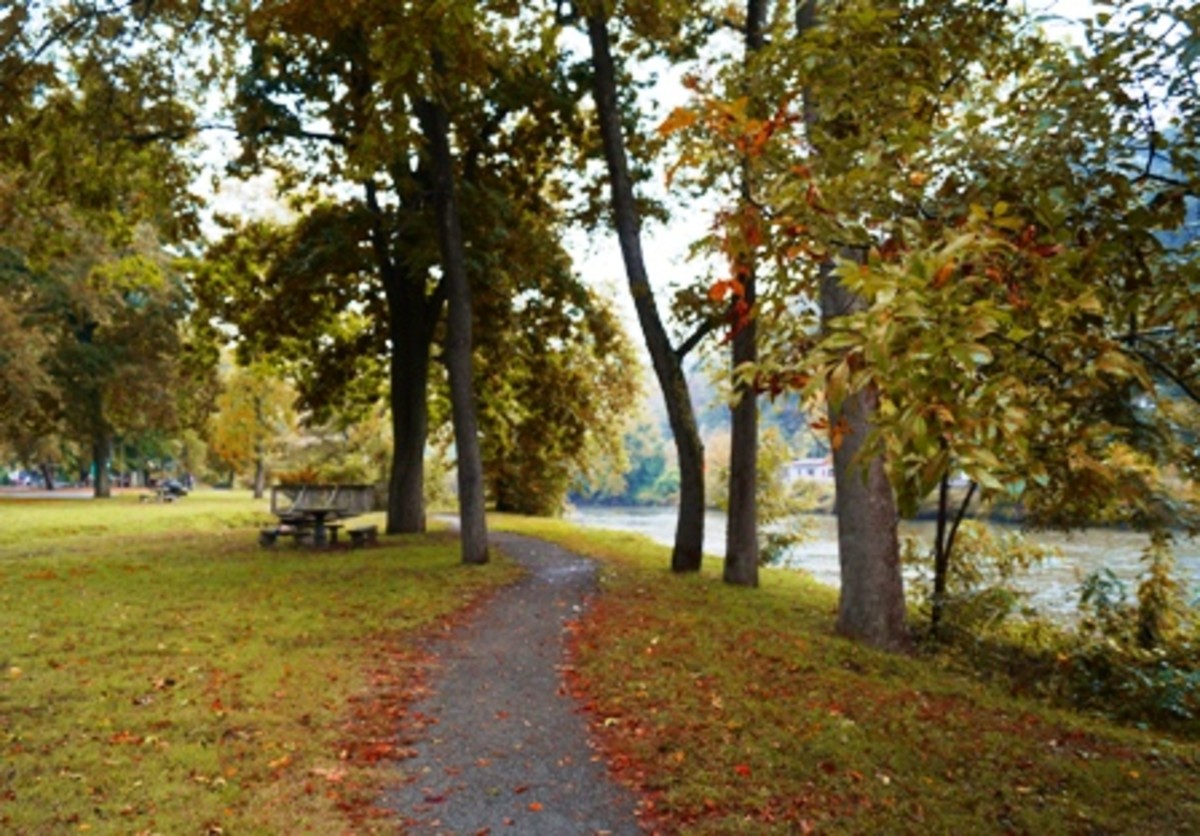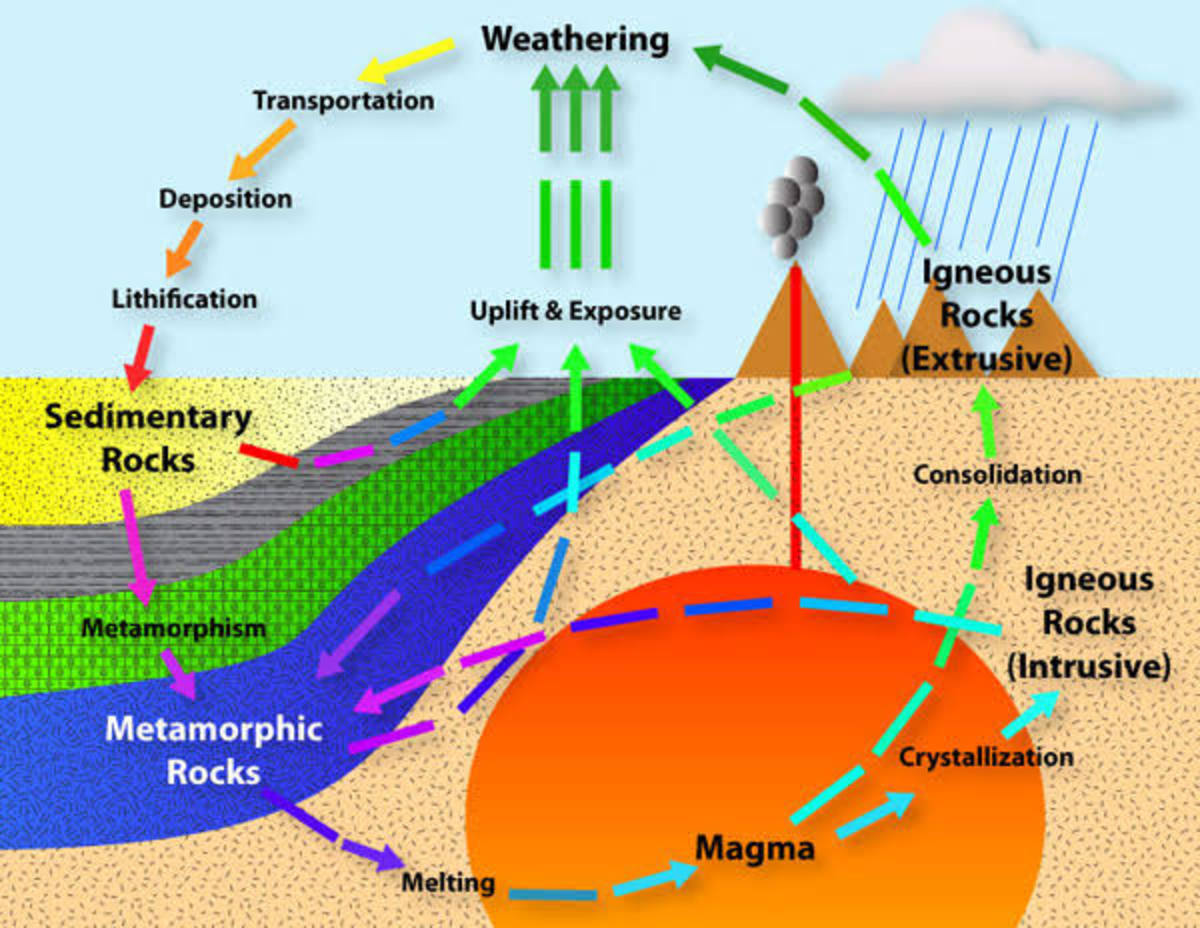Beauty of Fall - Leaf Pigments and Why Leaves Change Color
Why Do Leaves Change Colors?
It is a natural and annual event that the leaves of trees change as the seasons turn from a warm spring and hot summers to cooler fall temperatures.
So why do leaves change color? There are a variety of environmental factors that contribute to the fall colors we see. The changing of autumn leaves is part of the natural process and growth cycle of trees that lose their leaves each year. New stems grow each spring as the weather warms up.
By late June, most trees have completed their growth cycle, in the Northern Hemisphere. The leaves open fully and the buds will not open again until the following spring. Once the buds are set, the tree begins storing carbohydrates to help prepare for next year’s growing season. The tree stores the carbohydrates in the branches, roots, and the buds of the tree in preparation for next spring.
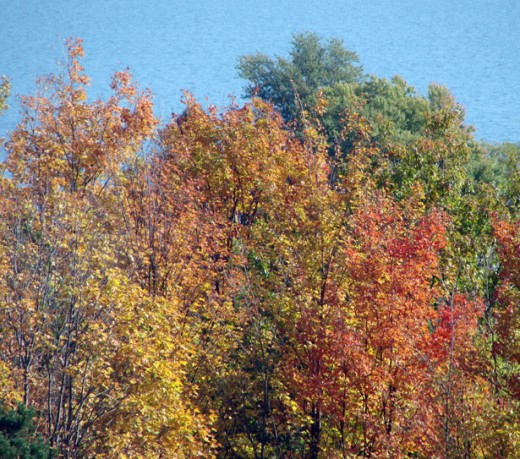
The Changing of the Seasons
Sunlight and the Leaves
As the Autumnal Equinox moves us from the summer season to autumn, and the daylight hours become less each day, we bid summer goodbye. As the climate gets slightly cooler, and the daylight hours shorter, trees begin to respond to these changes.
The trees will reduce their production of chlorophyll and the leaves lose their green color. This allows the yellows,oranges, and browns of the leaves to show through, since the carotenoid is already in the leaves.
Trees respond to the decreasing amount of sunlight by producing less and less chlorophyll. Eventually, a tree stops producing chlorophyll. When that happens, the carotenoid already in the leaves can finally show through.
Some of the trees produce anthocyanins and we can see red and purple leaves. Some years, the red leaves are brighter than others, depending on the temperature and cloud cover during the autumn day.
With sunny fall days, followed by comfortable and cool nights, the red comes out a stronger color. During the day, the leaves are producing plenty of sugar.
The cooler nighttime temperatures stop the sugar sap from flowing out of the leaves and into the branches and trunk of the tree. Anthocyanins protect the tree by recovering nutrients in the leaves prior to them falling to the ground. This helps prepare the tree for next spring.
The cartenoid color is consistent year to year, since the carotenoids are always being produced by the tree. Temperature does not affect the amount of chemical of cartenoid produced and doesn’t affect the color.
Deciduous is Latin for Falling
Trees that lose their leaves are known as deciduous trees.
The beautiful changes we see in a leaf color, is actually part of the growth process. Between late summer and early fall, the deciduous trees become sensitive to the shorter days and less daylight. Deciduous is the Latin word for falling.
Leaves fall because of a complex cellular mechanism that is part of the natural growth cycle of trees. At the base of each leaf, there exists a special layer. This is the abscission layer of the leaf, where the cells begin to swell and slowly block the transport of the plant’s nutrients from the leaf to the tree. The leaves begin to lose their green color because chlorphyll is no longer getting to the leaf.
Once the abscission zone is totally blocked, the leaf loses its connection to the branch and is either blown off by the wind or falls to the ground. The branch forms a protective seal where the leaf separated to prevent the evaporation of water and stop bugs from getting in. The process of abscission works the same way for all leaves, fruits and flower petals too.
This process is more dependent on the shortened daylight hours, than the temperature, so leaves generally start to change at about the same time each year.
Yellow pigments have xanthophylls and orange pigments have carotenoids. These colors exist throughout the growing season. Anthocyanins are not present during the growing season. Both of these become visible when the green color fades, because chlorophyll covered up these colors. Tannin is the only pigment that remains in leaves, even in cold weather, which makes the leaves look brown.
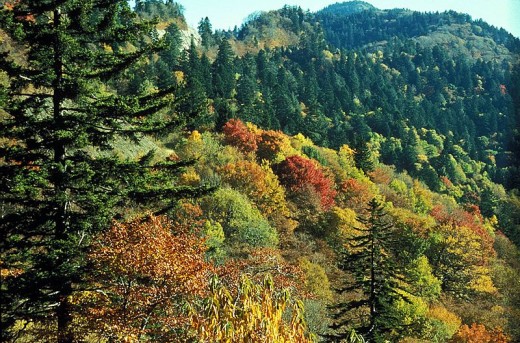
How the Leaves Get Their Color
The roots of plants take in water for nourishment. Plants take in carbon dioxide from the air and use sunlight to turn the water and carbon dioxide into a sugar, called glucose, to use as energy to grow.
This conversion is called photosynthesis. The leaves of trees and plants look green because of a chemical called photosynthesis. As the summer days wind down and the cooler temperatures and shorter days of fall begin to dominate, the plants slow up their production of chlorophyll.
This causes the green color of the leaves to start to go away, and the other colors that make up the leaf begin to show through. Red and violet leaves get their color from anthocyanins pigmentation.
The purpose of these colors is as protection from the sun. When the chlorophyll levels drop, the leaves are not able to utilize the sun’s energy. The pigments of anthocyanins absorb the extra sunray’s and act as a sunblock protection of the leaf’s tissues.
It is pigments that make up leaf colors, which come from the natural substances produced by the cells in the leaves.
- green in leaves comes from chlorophyll
- yellow comes from xanthophylls (which is part of cartenoid group)
- orange comes from carotenoid
- brown comes from tannins
- red and purple comes from anthocyanin
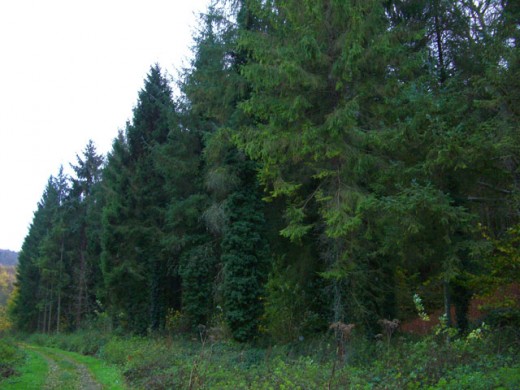
Nature Naturally Recycles Itself
The leaves are more delicate than the branches and roots of a tree, which can handle the cold and freezing temperatures of winter.
Leaves are made of cells that are filled with sap and water that will freeze and harm the tissue of the leaf. The trees lose their leaves as protection from winter. Since a leaf would not survive the frigid temperatures, the tree must seal itself off the exposure to the cold.
The veins of the leaf close off slowly as the autumn sunlight decreases. At the base of the stem of the leaf, a separation layer forms. When it is fully formed, the leaf becomes separated from the tissue that connected it to the tree branch.
The leaf then falls to the ground. Only the Oak tree keeps its leaves in the winter because the separation layer never fully forms. When the leaves fall to the ground, they are broken down by organisms, fungi, bacteria, and bugs like earthworms.
The leaves return nutrients to the soil and help absorb rainfall.
Nature naturally recycles itself.
The trees survive the winter by living off food they have stored from the warmer summer days.
Some trees stay green all year long. They are known as evergreen trees and include spruces, pines, firs and cedars. These trees have needles that are covered with a protective wax so that the fluids running inside the leaves or needles are able to resist the frigid temperatures of winter.
The green we see in unripe bananas comes from chlorophyll also. As the banana gets ripe, the chlorophyll breaks down and disappears
Chlorophyll is the Most Important Pigment
Chlorophyll in the leaves uses the sunlight to produce food.
Chlorophyll is the most important of the pigments. Carotenoids give leaves their brilliant orange and yellow colors. Cartenoids are also in corn, bananas, and carrots, as are many other fruits and vegetables.
Tannins come from the waste of the plant
Anthocyanins is a pigment that adds the color red to plants like cranberries, cherries,red apples, strawberries, blueberries, blackberries, raspberries and other red, purple and blue plants, fruits, and vegetables. Anthocyanins are mostly produced in the fall season, and only under certain conditions. Only certain trees can even make anthocyanin.
Too Much or Too Little Rainfall
Rain can affect the color of leaves. When we have a severe drought, the fall colors will be delayed in coming out.
Too much rain, with warm temperatures during autumn, will make the colors less intense. A frost can kill the leaves, turn them brown, and make them drop earlier than normal.
It will be a good display of autumn colors when the summer is not too hot or dry, and the fall has many warm days filled with plenty of sunlight and cooler nights.
Ideal Conditions for Beautiful Fall Foliage
Sunlight, soil moisture, and temperature have an impact on the quality of color of the autumn leaves.
A lot of sun, and low temperatures, once the abscission layer has formed can result in the chlorophyll being destroyed quicker. When the weather gets frigid, the anthocyanins can’t produce, so the autumn may have a less colorful display.
A drought can cause stress on the tree, and cause the abscission layer to form earlier than normal, making the leaves drop before they are able to develop their full color. The best conditions for an ideal beautiful autumn foliage display is:
- ample moisture during the growing season
- dry, sunny, and cool autumn days
- frostless nights during autumn
- lack of wind and rain during autumn
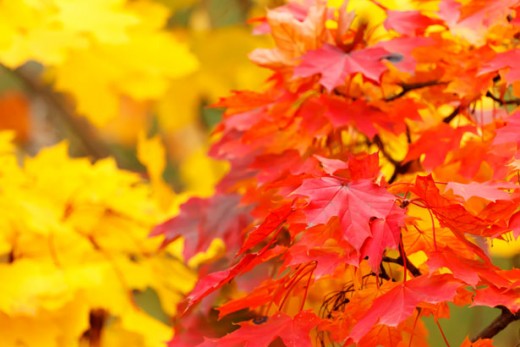
tree
| leaf color
|
|---|---|
oak
| red, russet, brown, crimson
|
birch
| bright yellow
|
dogwood
| purple, red
|
hickory
| golden bronze
|
poplar
| golden yellow
|
sugar maple
| orange, red
|
red maple
| bright red
|
black maple
| bright yellow
|
maple
| range of colors
|
New York Fall Foliage
Where to Find the Best Foliage
The Eastern part of the United States, has probably the most beautiful display of fall foliage. Click here to see the best places to find fall foliage in New York.




